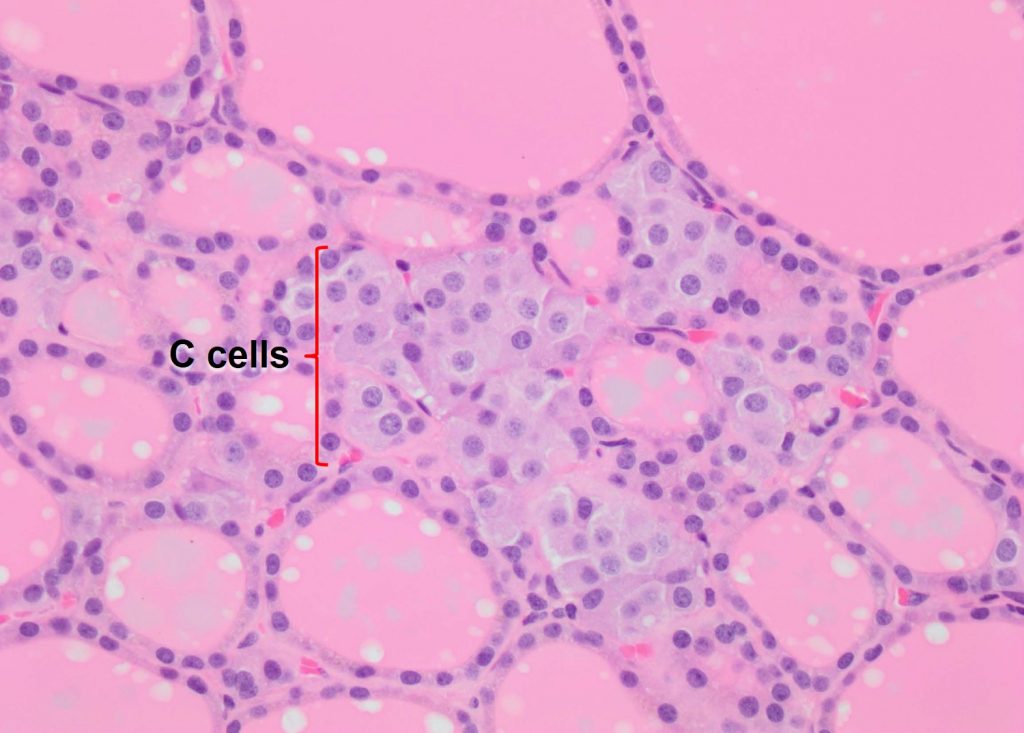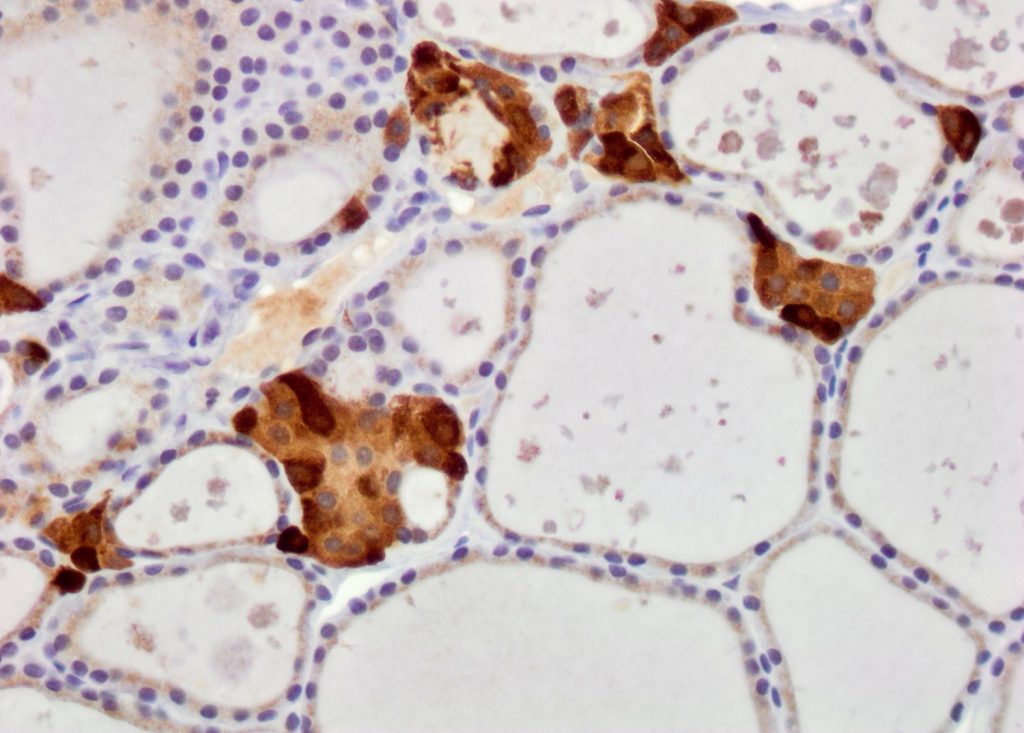Chapter 15: Endocrine system
Thyroid gland
Ryan Jennings
The thyroid gland is a single organ present in both mammalian and non-mammalian species, but with some variation in gross anatomy. Although a single organ, the thyroid gland of most species has distinct, anatomically separate lobes (dogs, cats, and horses). Species such as cattle have two lobes connected by a thin strip of tissue (isthmus). Pigs have very little lobar distinction in their thyroid gland. Regardless of the anatomic features, the organ serves the same major functions in all species: the production of thyroid hormone and calcitonin.
The thyroid gland contains two distinct populations of hormone secreting epithelial cells: thyroid follicular epithelium, and medullary (C) cells.
The thyroid gland is surrounded by a thin fibrous capsule. The most prominent architectural feature of the thyroid gland are the thyroid follicles.
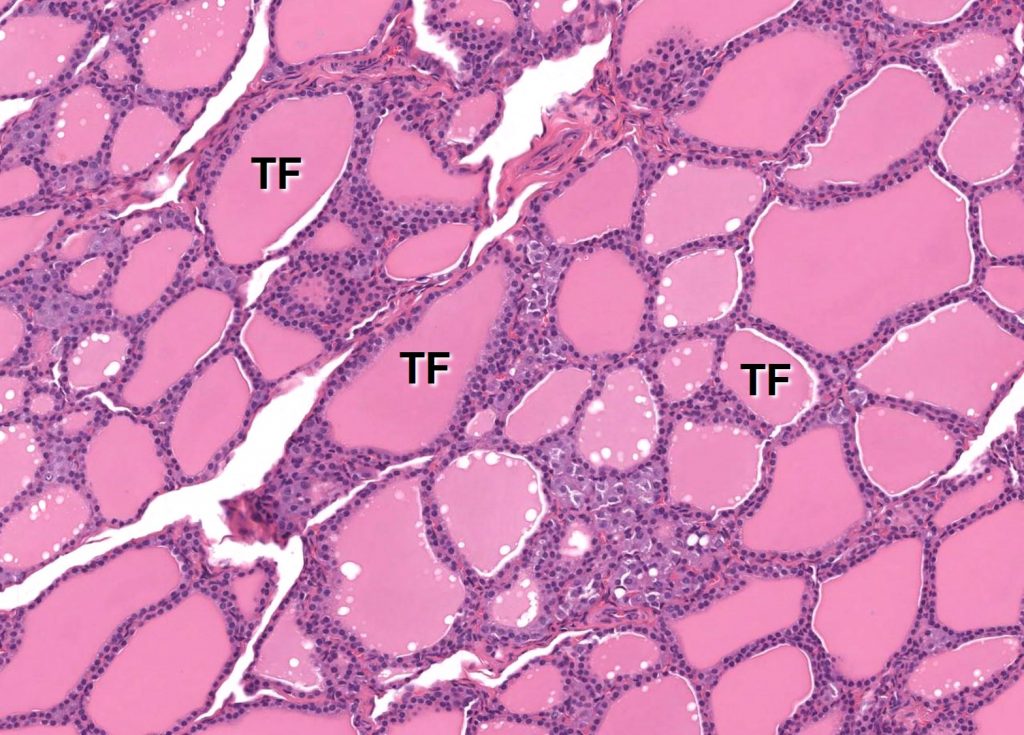
Thyroid follicles are lined by a single layer of thyroid follicular epithelium. Thyroid follicular epithelial cells are normally cuboidal, with moderate amounts of eosinophilic cytoplasm and round, hyperchromatic nuclei.
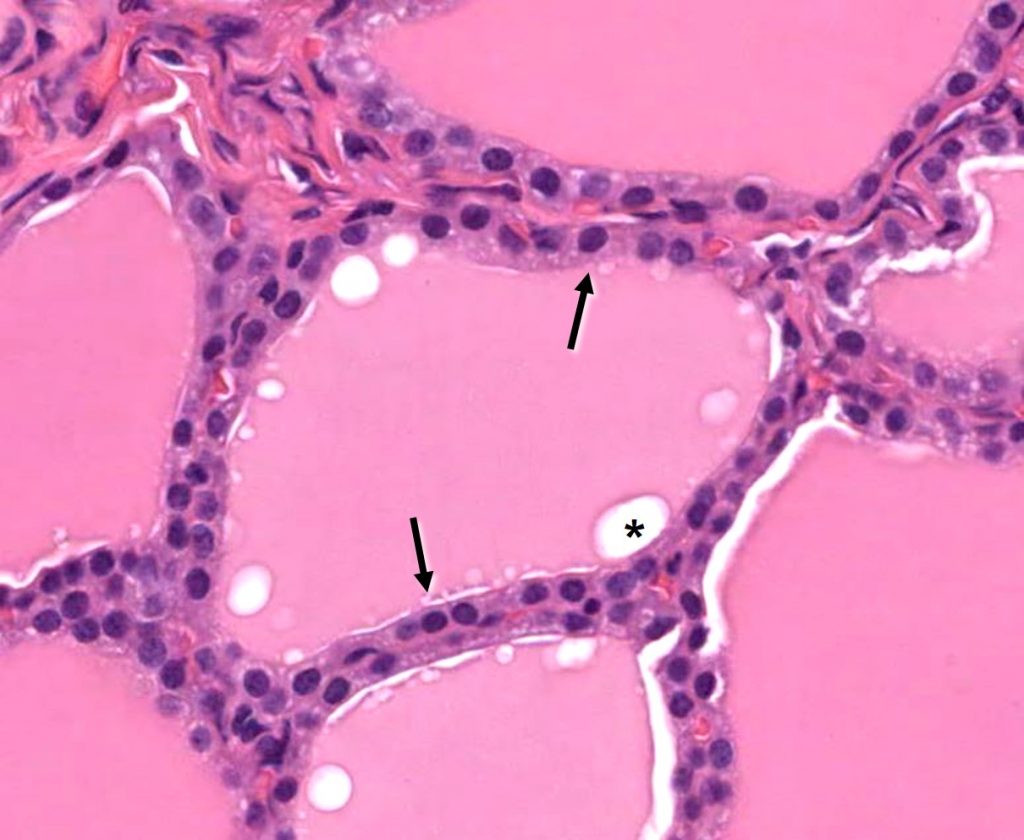
These epithelial cells surround a central lumen filled with a homogeneous, pink product called “colloid”. Colloid is a protein rich fluid containing thyroid hormones produced by the thyroid follicular epithelium.
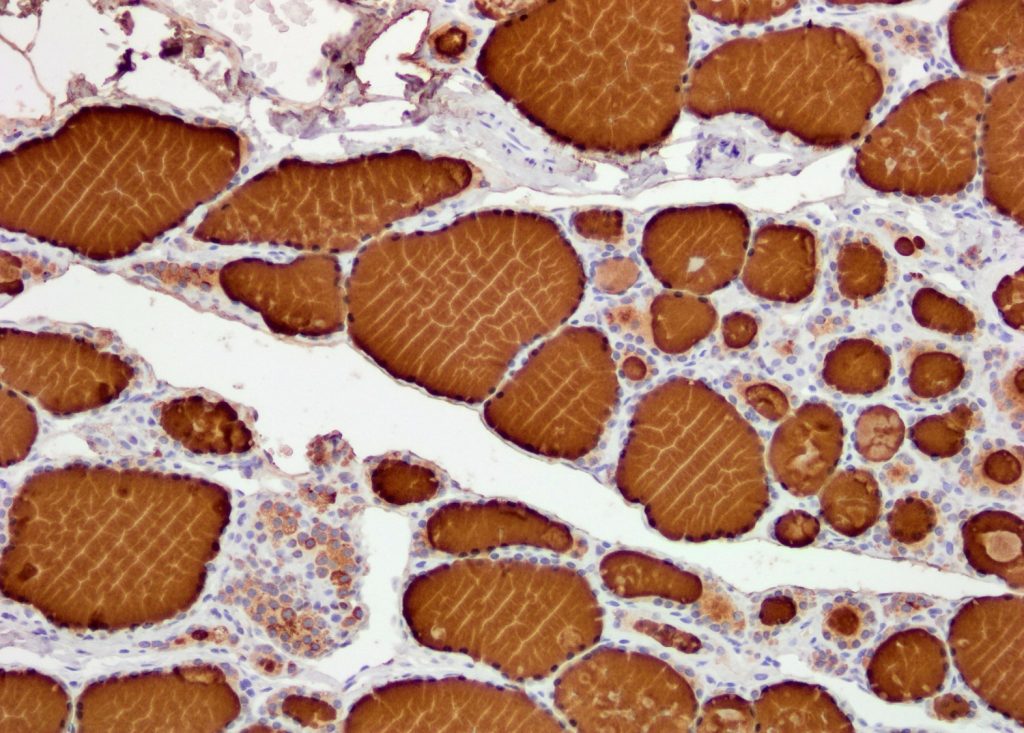
The thyroid follicle lumina, which contain the colloid, essentially act as a storage vat for thyroid hormone, which may then be transported across the follicular epithelium and released into capillaries adjacent to the epithelium. This synthesis, uptake and release of thyroid hormone is mediated by TSH secreted by the pituitary gland.
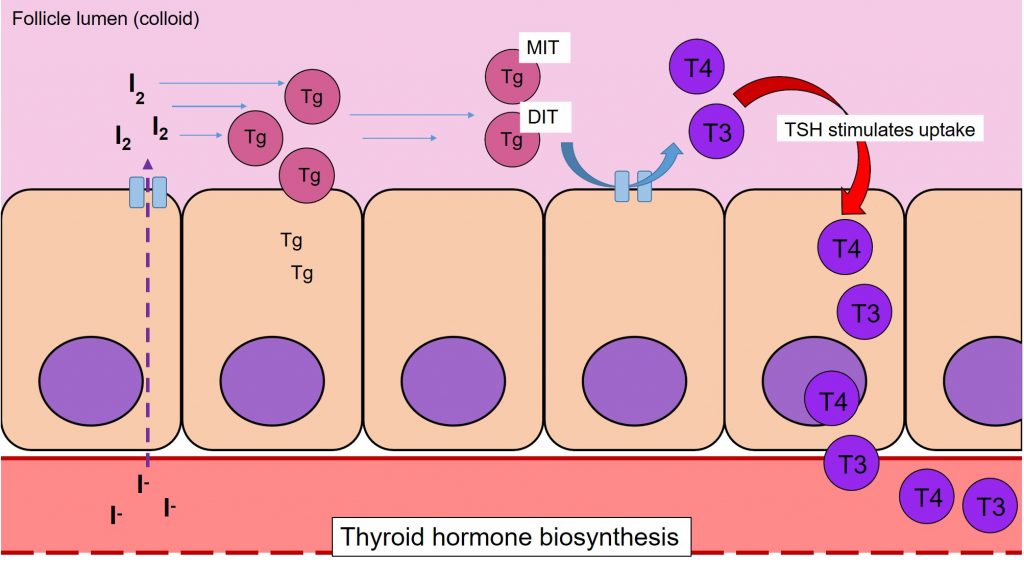
Thyroid medullary cells (also known as C cells) are polygonal cells with moderate amounts of faintly staining cytoplasm. C cells produce and secrete calcitonin (see below), a hormone that regulates calcium/phosphate levels within the body. C cells lie between thyroid follicles in small clusters, frequently adjacent to capillaries.
